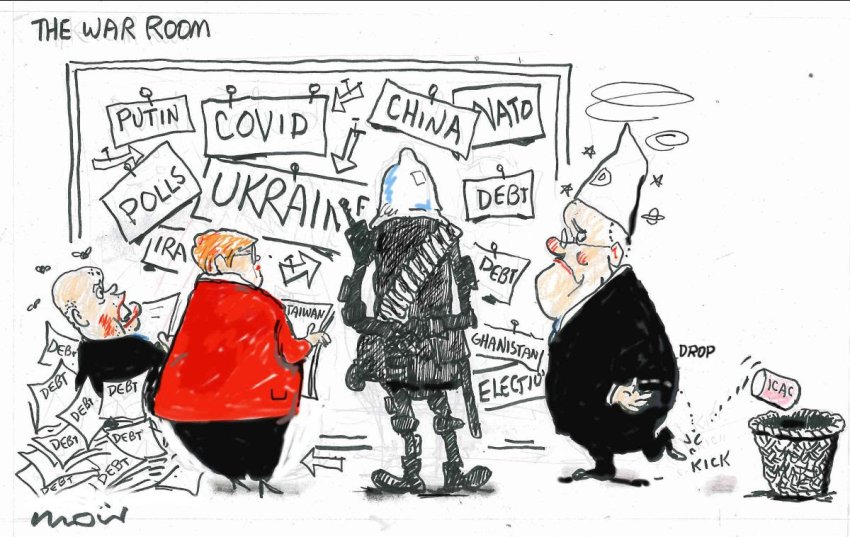
Both federal treasurer Josh Frydenberg and Labor’s shadow treasurer Jim Chalmers have framed the upcoming budget debate on March 29 with talk of the need for “budget repair”.
According to John Quiggin, Professor in Economics at the University of Queensland, talk of budget repair was “a euphemism for cuts or austerity”. “What we are seeing, whichever party wins, is a bunch of cuts that haven’t been announced. Both major parties are pursuing the same line,” he told Green Left. “They are not ruling out further cuts but we will probably only see this when the election is behind us.”
The additional public debt, built up in response to the COVID-19 pandemic is not a big problem, Quiggin said, because interest rates have fallen into negative territory.
“The emerging consensus in the mainstream economic profession is that there is a huge capacity to take on additional public debt as long as we use the proceeds wisely. Even the Morrison government is no longer talking about eliminating public debt or even bringing the budget back to balance.”
Talk of “budget repair” is about getting a few claps from the likes of the Australian Financial Review, Quiggin said, adding that there is also little of substance in the politicians’ talk about addressing the cost of living.
“The real problem is wages. What we need is higher wages, and even the Reserve Bank says this. But what this requires is a reversal of consistent government policy for 40 or 50 years. They have suppressed unions and driven down wages in all sorts of ways.”
Quiggin said that there was plenty of room for measures to address economic injustice and the climate crisis “but instead it looks like we are going to get tax cuts for people who don’t need them”.
He added that we are looking at getting “a very poorly thought out increase in defence expenditure and lots and lots of targeted goodies which may or may not be worthwhile”.
“In a situation like we have now, where there isn’t a big supply of skilled workers and there isn’t a big amount of unused capital, then resources that go to one purpose, like tax cuts for the rich, can’t go to another. Those resources need to go to low-income workers and the unemployed.”
Quiggin strongly supports the Australian Greens newly announced proposal for a “Liveable Income Guarantee”, which he helped develop.
“This idea, which I have been advocating for some time, is the sort of alternative that is needed to what is on offer from the Liberal and Labor parties.”
As Quiggin explained in The Conversation on March 21, this policy would increase all income support payments — for those looking for work, studying full-time or unable to work because of age, disability or caring responsibilities — to $88 a day (about $32,000 a year) from July 2023.
This payment level is based on the poverty line calculated by the Melbourne Institute. Increases to all payments would be indexed to changes to the poverty line. The policy would also scrap mutual obligation programs, such as “work for the dole”, and relax eligibility restrictions.
At present, the age pension for a single person is about $70 a day and JobSeeker is about $44 a day, which puts it well below the poverty line.
Quiggin described the Livable Income Guarantee as “the first significant economic policy in the undeclared campaign for the next federal election campaign”.
“The Greens’ plan shares its name, and many of its design features, with a proposal put forward in July 2020 by Tim Dunlop, Elise Klein and myself,” he wrote in The Conversation.
“We proposed this after the massive expansion of the JobSeeker program to deal with COVID-19 demonstrated Australia did have the resources to eliminate most sources of poverty when it was considered necessary to do so. We argued a liveable income guarantee would be an ideal way to make the achievements of JobSeeker permanent.”
The Parliamentary Budget Office has calculated this will cost about $43.7 billion in the first year and $44.9 billion in the second.
But the Greens’ proposal differed in two ways: first, it was more generous that the Liveable Income Guarantee Quiggins, Dunlop and Klein put forward; and secondly, the Greens’ proposal restricted itself to the current categories of welfare recipients while the original proposal expanded eligibility to people engaged in volunteering, community projects and artistic and creative activity.
The Livable Income Guarantee, explained Quiggin, could be paid for by a number of measures:
1. Canceling the Stage 3 tax cuts, estimated to cost $18–20 billion a year. That would offset nearly half the money spent on the liveable income guarantee;
2. The Greens’ proposal for a billionaires’ tax and a corporate super-profits tax, although Quiggin added it was hard to calculate exactly how much this might raise; and
3. The elimination of various tax concessions or exemptions, including concessions on capital gains tax and superannuation. These cost about $150 billion a year according to the latest Treasury estimates.